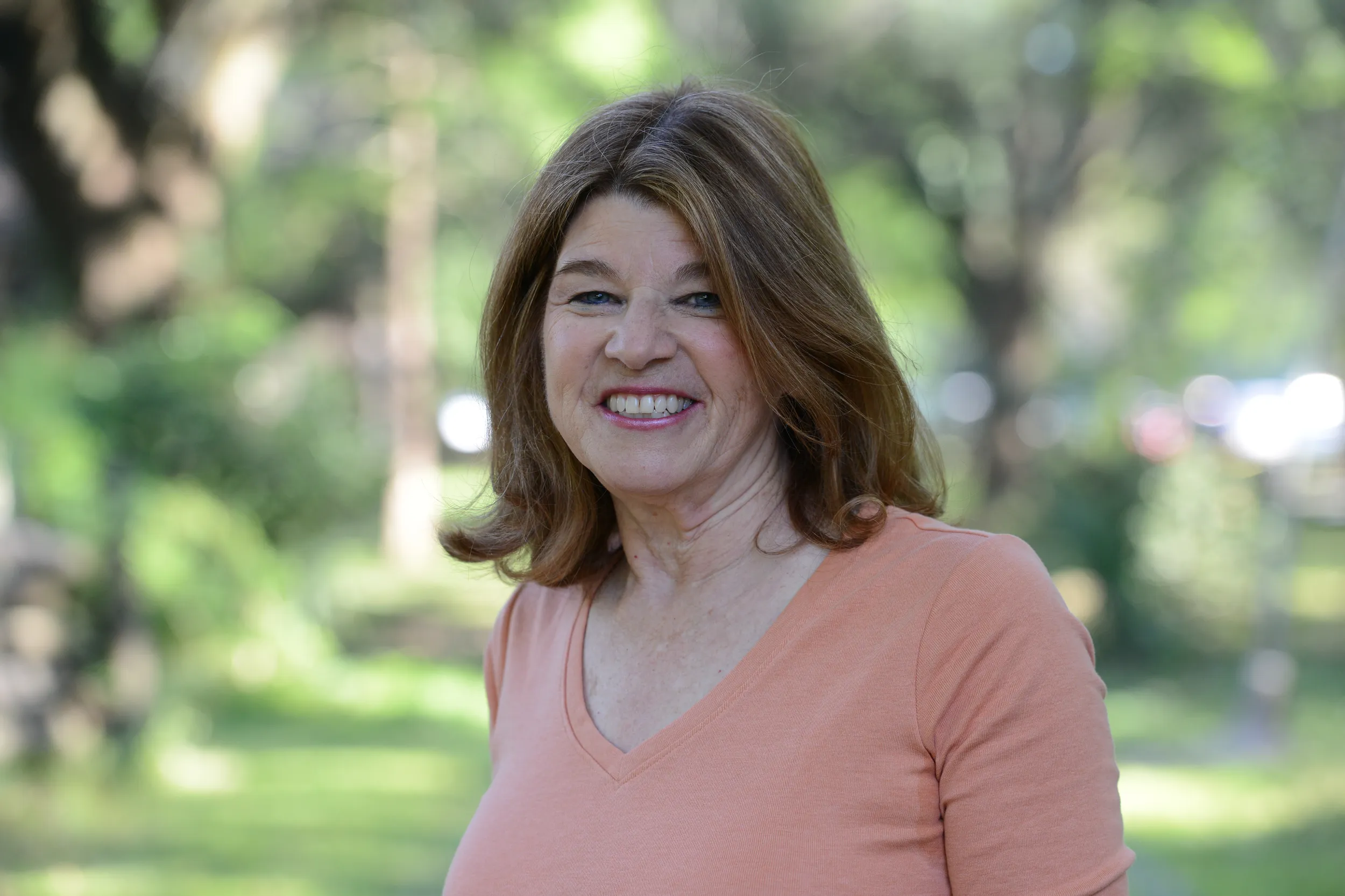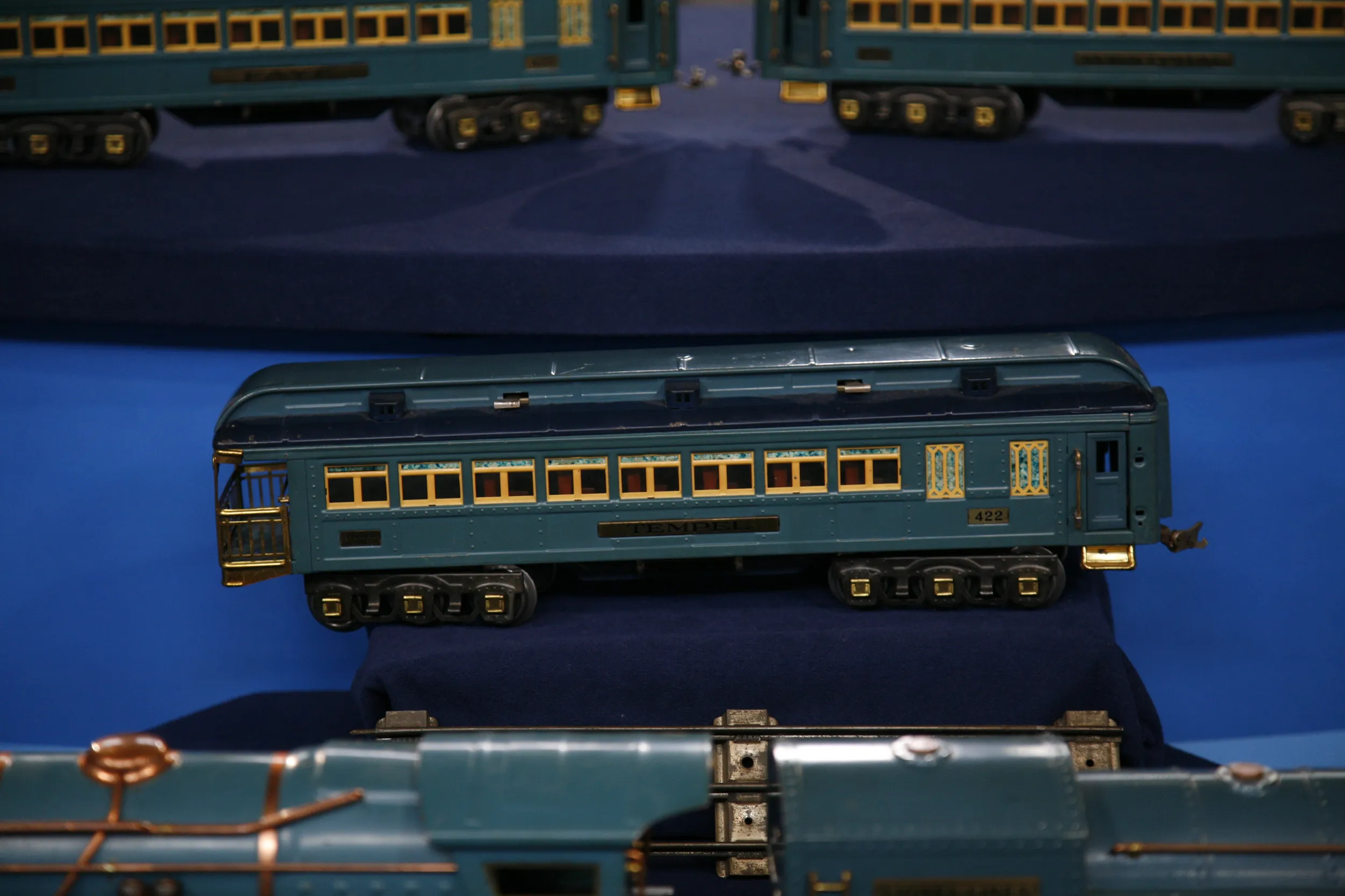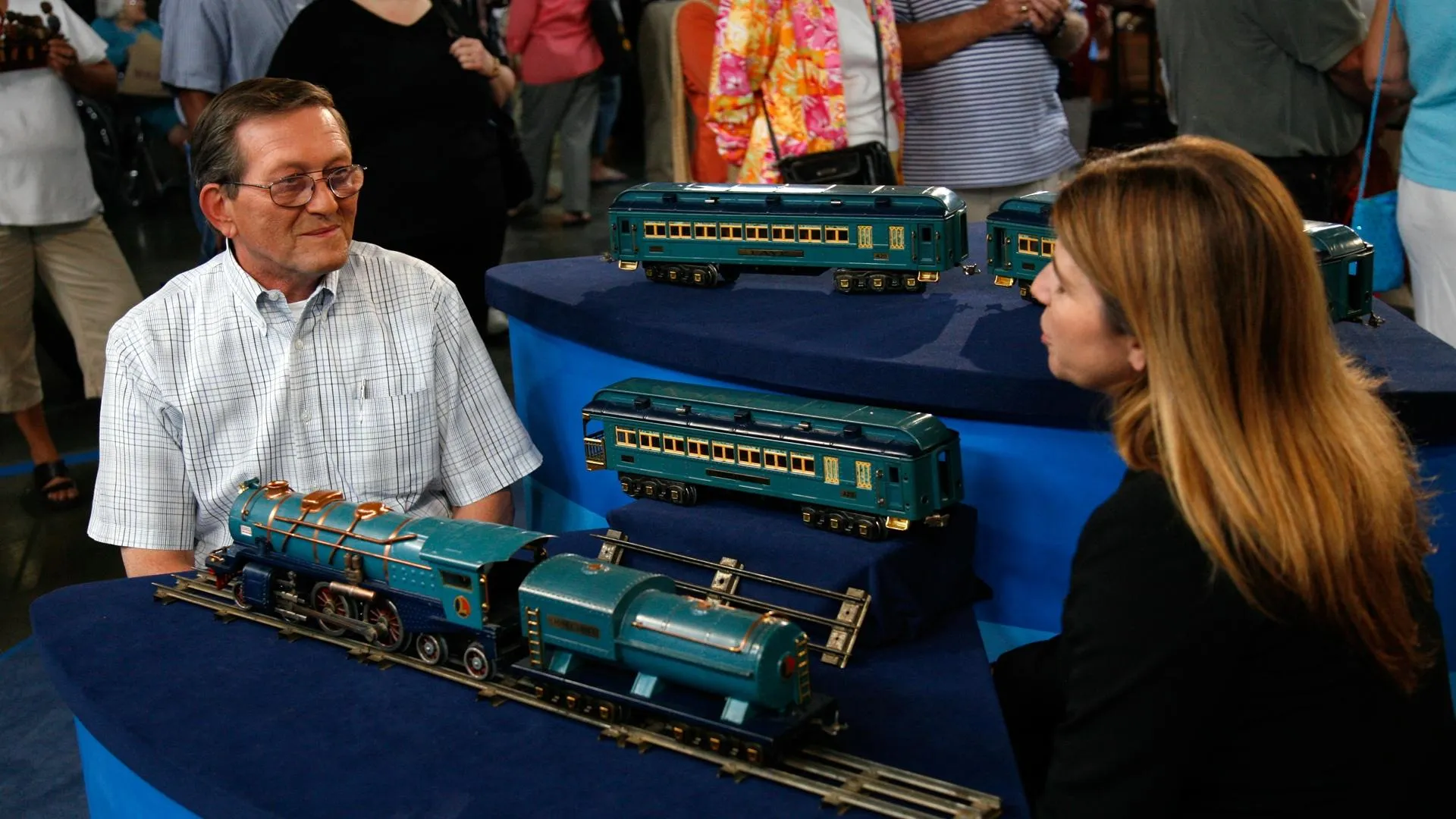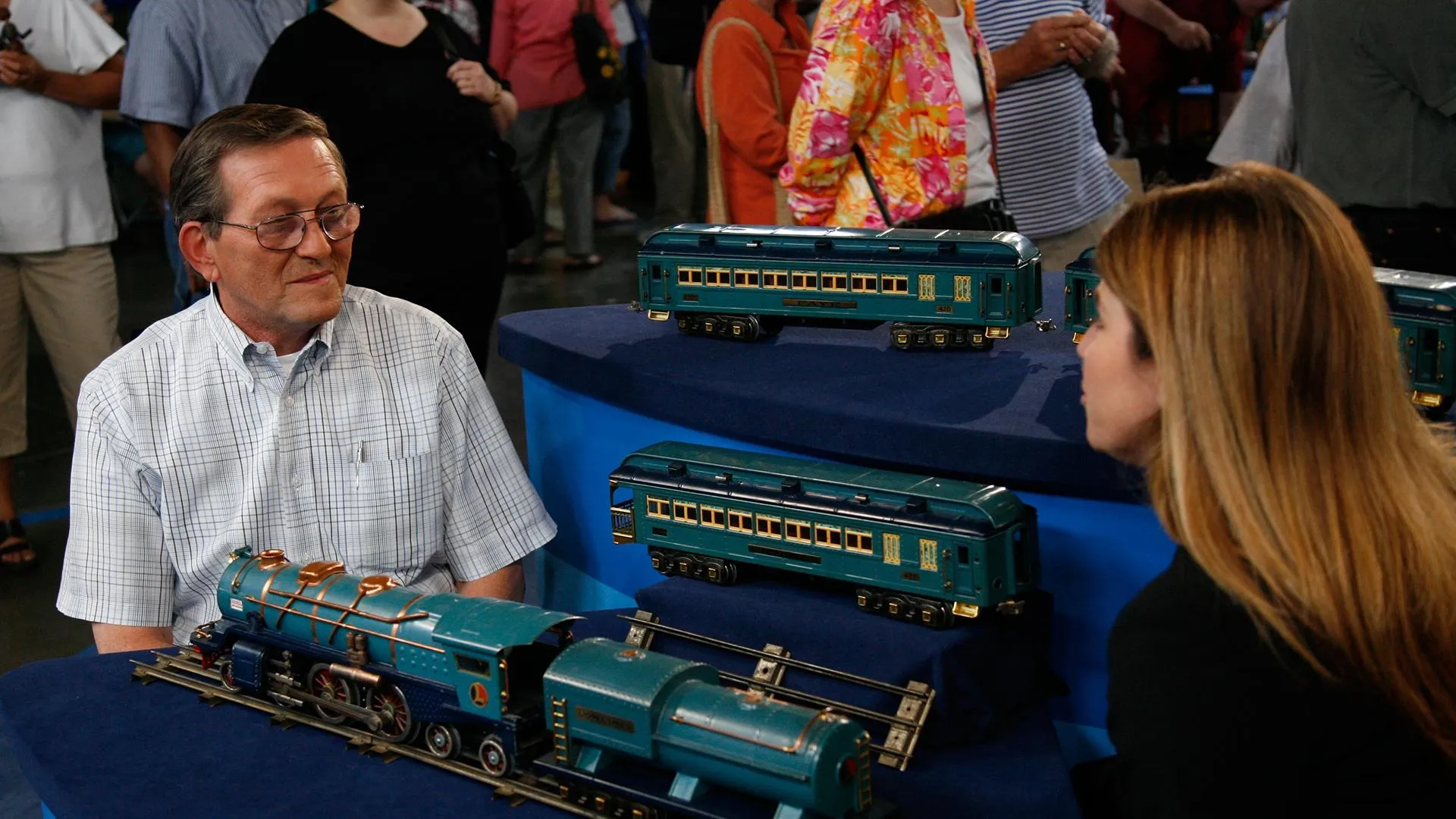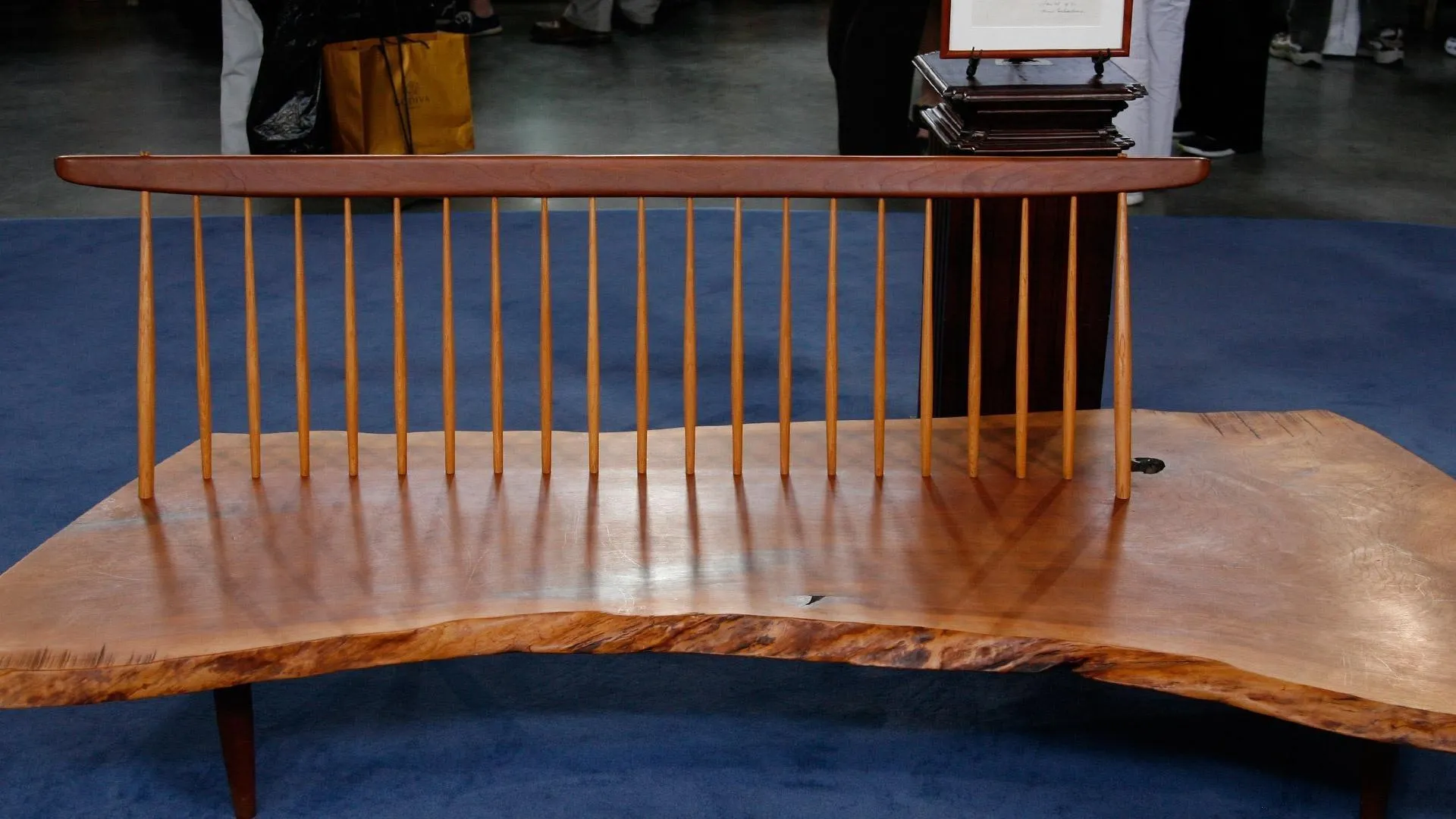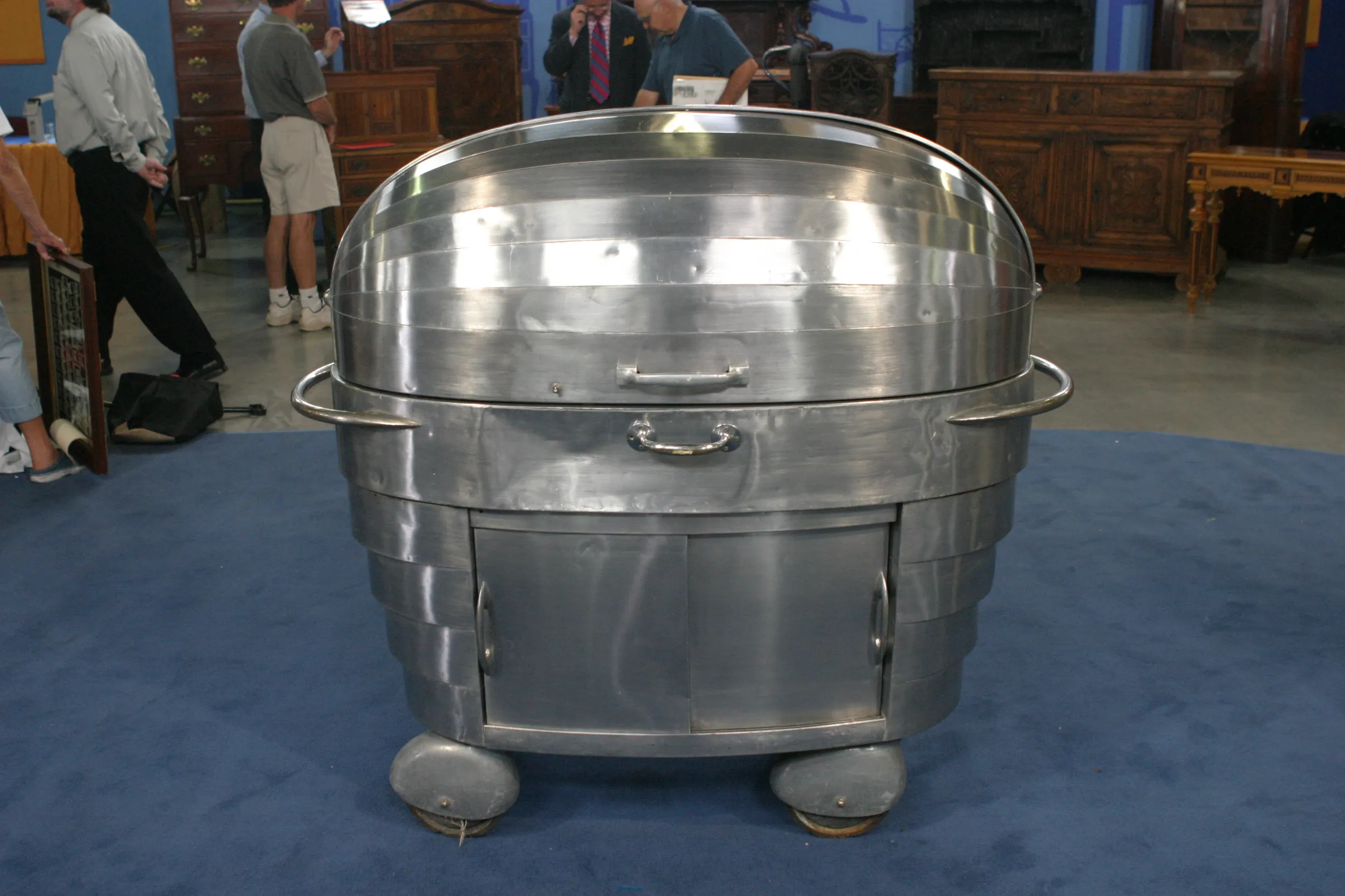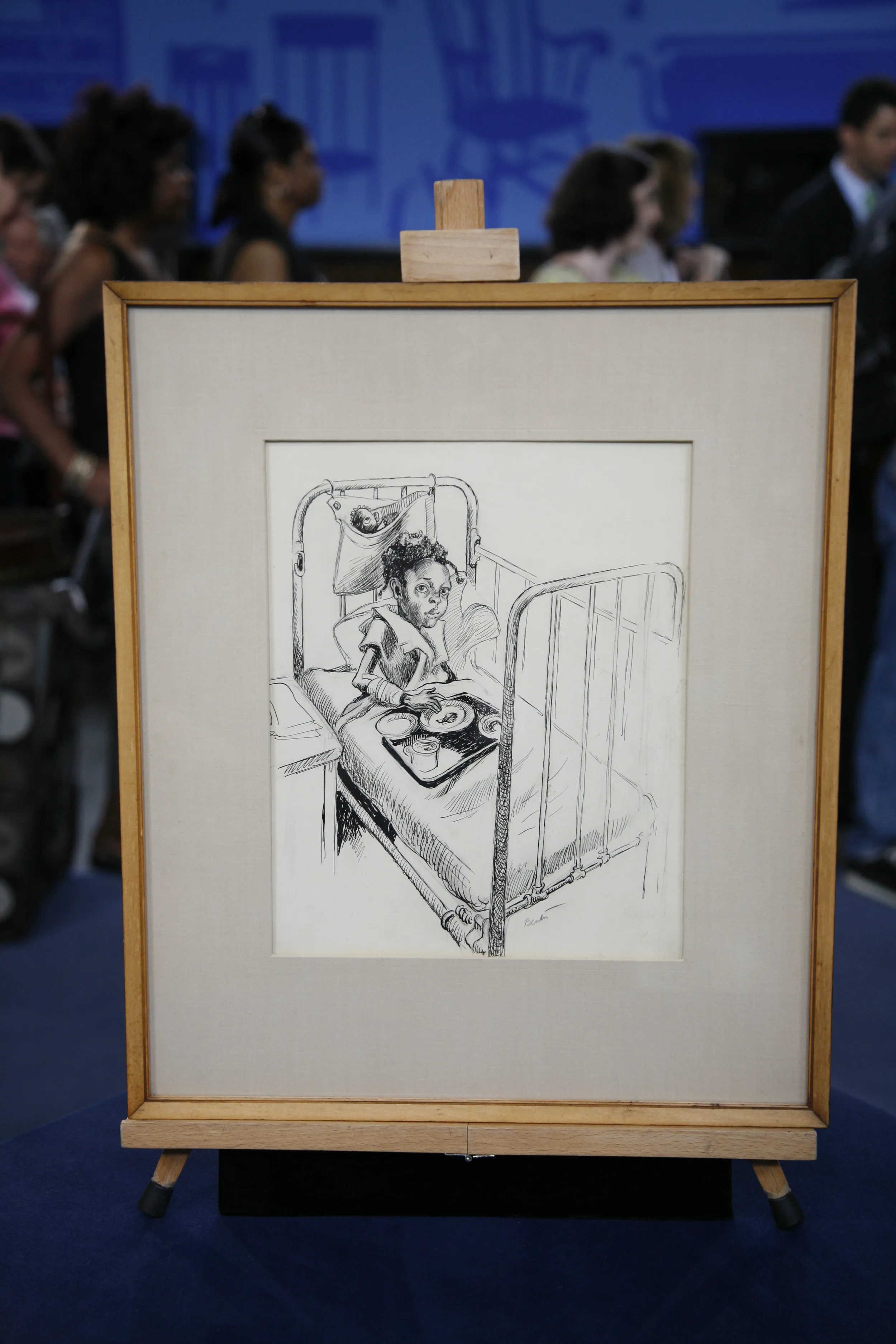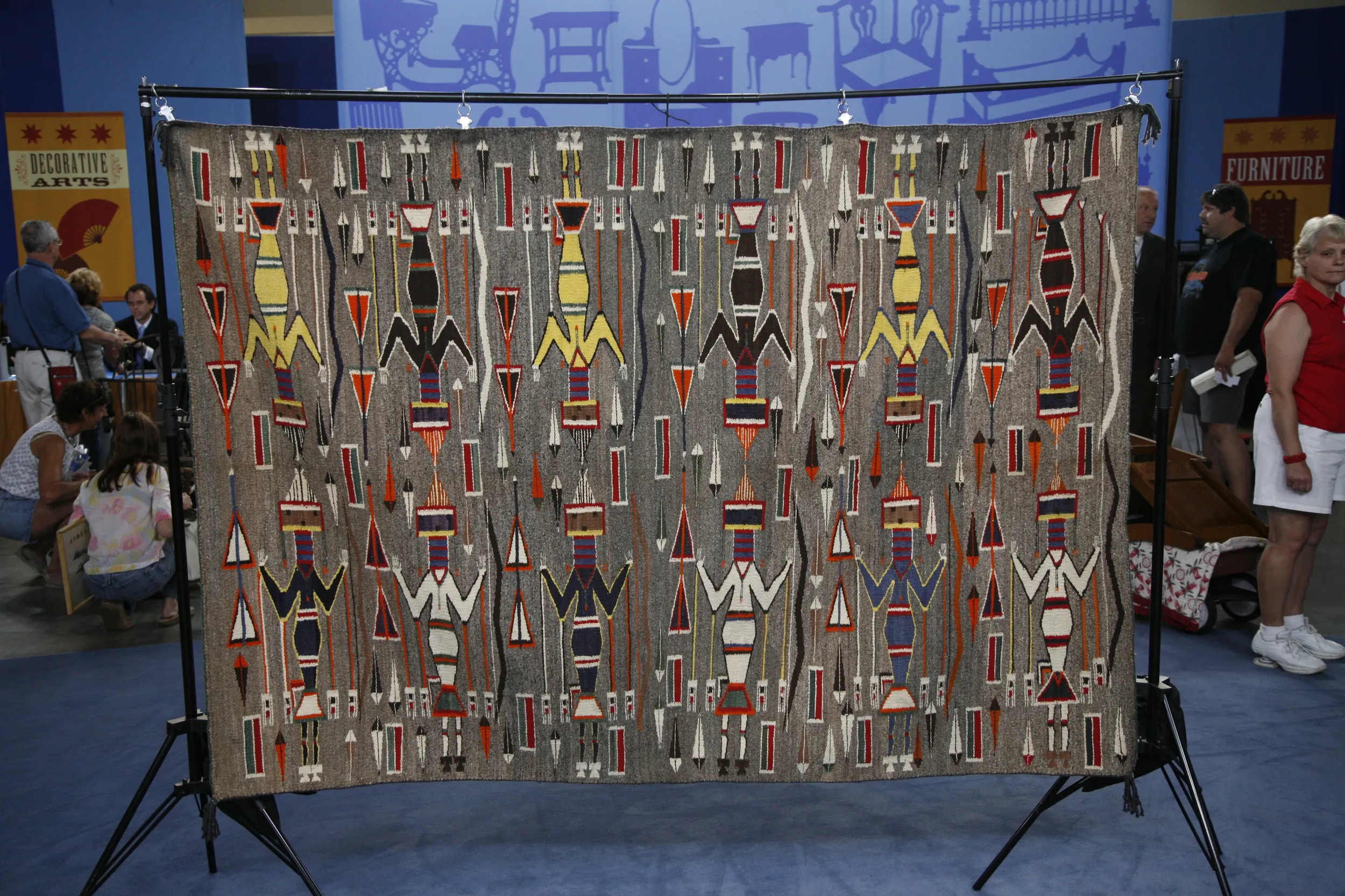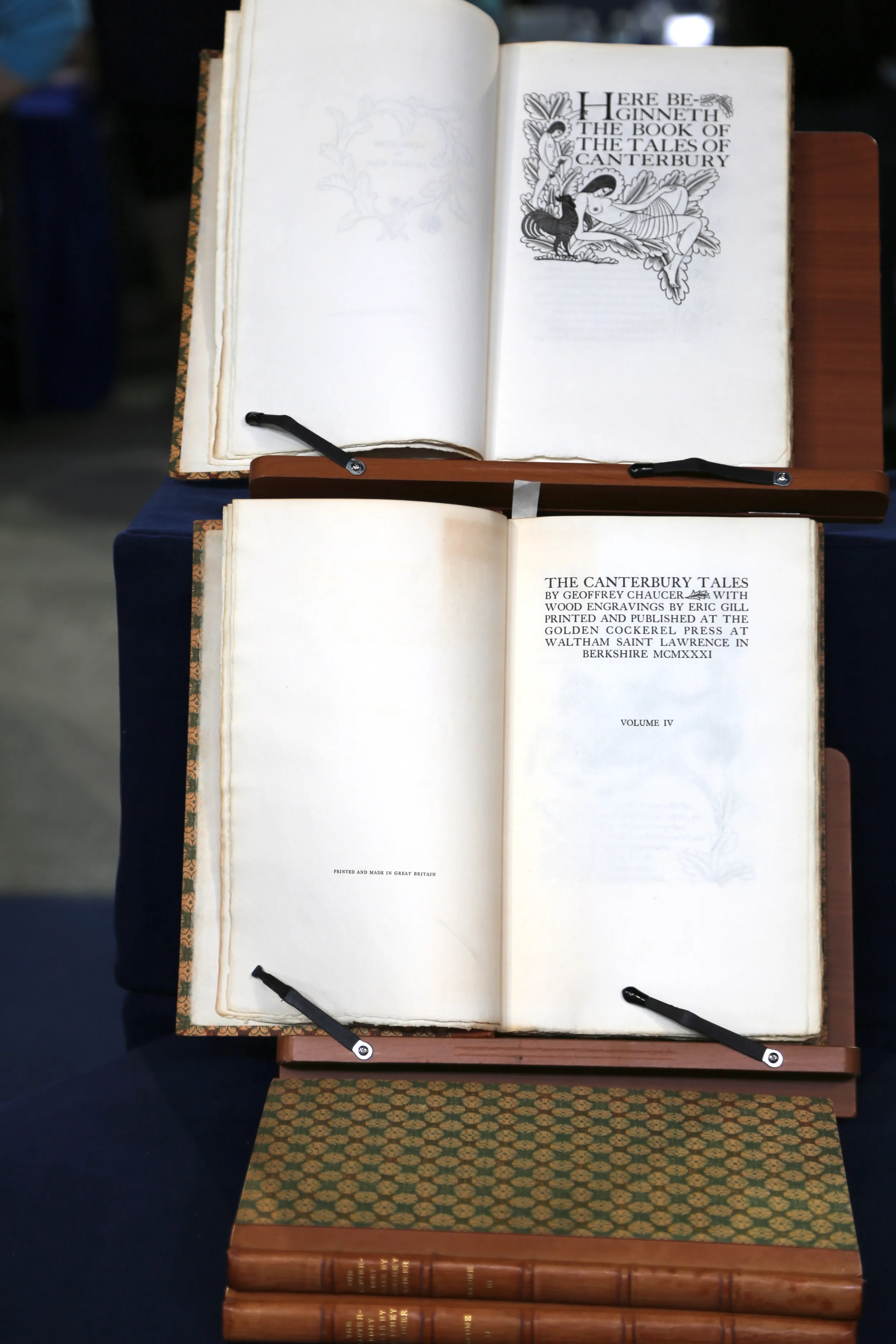GUEST: It belonged to my uncle, then my cousin got it. Then my cousin died and his wife asked me if I'd like to have it.
APPRAISER: Now, you're a train buff?
GUEST: Not until this one. (laughs)
APPRAISER: Do you know much about Lionel Company?
GUEST: I know they've been in business a long time, but, uh...
APPRAISER: Well, we'll fill in a few blanks for you.
GUEST: Okay.
APPRAISER: First of all, Lionel was actually the middle name of Joshua Lionel Cowen-- earlier Cohen, but later Cowen. He came over to the States, and in the late 1800s, he developed the flash powder that photographers use. And it was so successful, the Navy contracted to use this flash powder for mine detonation. This is how he got his stake and he could start the Lionel Train Company, which he thought of when he saw a small fan, and he tried to figure out how to use it. And he figured he'd put in a little motor, and that's when he started with the toy trains. He's the one who invented this size, which is called standard gauge. And what he endeavored to do with standard gauge was to make the most beautiful, luxurious trains for kids possible. And this is considered to be one of his greatest accomplishments, the Blue Comet. It came out in the early 1930s, about 1930 to 1938. This was actually based after a real train.
GUEST: Oh, is it?
APPRAISER: 1929 to 1941, there's a train called the Blue Comet that ran a New Jersey Central Line down to Atlantic City and the Jersey Shore. It was called the seashore's finest train. And it was competing with Pennsylvania Railroad. It was painted blue because of the Jersey seashore. And guess what? The Blue Comet, the Faye, the Westphal, and the Tempel here, all named after comets.
GUEST: No kidding.
APPRAISER: The train was so beautiful that people would actually wait for it to come down the tracks so they could watch it go by. Three hours from door to door, that's what they advertised. And they advertised the finest in luxury. And when Joshua Lionel Cowen created this train, that's what he wanted to do, as well. Let's take a look. The actual train had triple-cushioned mohair seats. They even show a bathroom and a commode. There was a smoking room for the gentlemen. There was an observation deck, which you see in the back of this train...
GUEST: Right.
APPRAISER: And they had all the luxuries for that time.
GUEST: Right.
APPRAISER: For a Lionel train, this is unheard of. You could never take the top off, and of course it had the spectacular electric light. All the little details were thought of to make this like the actual-size Blue Comet. Now, at the time this was sold, $70 to buy this in the 1930s, at the height of the Depression. You could buy a three- piece bedroom suite or you could buy a used Model T for that kind of money.
GUEST: Oh, my.
APPRAISER: For auction, I would put this at estimate $8,000 to $10,000.
GUEST: Oh, my.
APPRAISER: It's sold as much as $11,500.
GUEST: Good heavens. That makes me want to treasure it even more.
